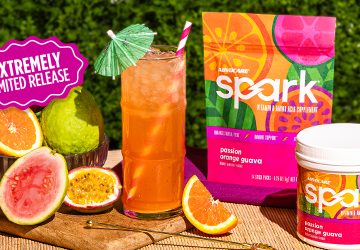Health trends come and go. One moment fat is the enemy. Tomorrow, “natural sugar” is preferred over sugar in general. Ever-changing health trends can simply be the result of new research and continued development in our understanding of the way the human body works. However, some trends may pose health hazards that have been overlooked due to consumer’s lack of awareness of the consensus of scientific research. Let’s talk about the truths in one of today’s health trends: pasteurization. Tweet This!
Truth behind the trend Tweet This!
Products boasting “raw” or “unpasteurized” qualities are a prime example of this. Some of the public information available regarding raw or unpasteurized milk products may lead you to believe that these products are a healthier option for you and your family.
However, it is important to know the risks associated with such products before consuming them. We’re here to provide you with truth behind the trend!
Raw or unpasteurized products claim that the pasteurization process harms or negatively affects the nutrition content of a product. Tweet This! You have probably heard marketing messages like “raw/unpasteurized is better,” a phrase commonly used to promote smoothies, juices, eggs, vegetables, and dairy-based products.
The raw milk/dairy trend is perhaps the most dangerous of these food fads, and is actually illegal to sell commercially in many states (or at least highly restricted). You may be wondering why or how danger dwells within something as simple as milk. To fully comprehend the reality of these dangers, we must first understand the process of pasteurization.
Where does the term “pasteurization” come from? Tweet This!
Pasteurization (as it applies to milk) has been widely used commercially since the turn of the 20th century, and renowned as a huge step forward in public health and food safety.
In fact, the name, “pasteurization,” honors Louis Pasteur, who discovered that microorganisms causing the spoilage of wine are killed by heating the liquid thoroughly below the boiling point.
After many successful years of keeping France’s wine from turning into vinegar, pasteurization was applied to milk processing. In modern commercial processing of substances like milk, heat is applied to the liquid at a specific temperature for a specific amount of time. While this seems like a simple process, it is actually vital to destroying pathogens that could make a person very ill.
What are the dangers of raw milk?
Raw milk or raw milk products can be contaminated with harmful bacteria, which can cause very serious illnesses. Tweet This! These time and temperature-dependent operations are set based on the viability of the most heat-resistant pathogens found in milk, Coxelliae burnettii and Mycobacterium tuberculosis. Infection with these bacteria found in livestock causes Q fever, which manifests flu-like symptoms, as well as life-threatening respiratory complications, hospitalization or even death.
From 1993 through 2012, 127 outbreaks reported to the Center for Disease Control and Prevention were linked to raw milk. These outbreaks included 1,909 illnesses and 144 hospitalizations. A large number of raw milk outbreaks involve children. At least one child under age 5 was involved in 59% of the raw milk outbreaks reported to CDC from 2007 through 2012. Children aged 1 to 4 years accounted for 38% of Salmonella illnesses in these outbreaks and 28% of illnesses caused by Shiga toxin-producing E. coli, which can cause kidney failure and death (CDC, 2017).
Symptoms can vary from person to person based on the amount of contamination, immune system defenses, etc.
Milk contamination may occur in these ways: Tweet This!
- Animal feces coming into direct contact with the milk
- Infection of the udder (mastitis)
- Cow diseases (for example, bovine tuberculosis)
- Bacteria that live on the skin of animals
- Environment (for example, feces, dirt, and processing equipment)
- Insects, rodents, and other animal vectors
- Unsanitary conditions in milk processing plant
- Cross-contamination from dairy workers, such as contact with dirty clothing or boots
Heat is lethal to most microorganisms, and each variety of microorganism has a different heat tolerance at which it can survive. The variation and multiplicity of microscopic life is why a scientific approach to food safety is so critical to public health and consumer safety.
Along with harmful bacteria like those previously listed, comes microorganisms that cause milk and other products to spoil. Pasteurization processes work to destroy and deactivate these spoilage microbes, and prolong the shelf life of certain products (i.e. boxed/canned milk).
The ability to prolong the shelf life of nutritious foods positively affects human nutrition. The ability to store and keep food without freezing or refrigeration is vital to fighting malnutrition around the world. However, there are still those that take a more basic, pseudoscientific approach to nutrition and public health. Pseudoscientific means a system of theories or assertions about the natural world that claim or appear to be scientific but that, in fact, are not.
Opponents of food safety processes (like pasteurization) say that the heating and sterilization method of processing products like milk/dairy strip the product of vital nutrients and “good” bacteria that positively affect human health.
There are claims about how the sterilization of food is harming our natural gut microbiota, and making us sick by weakening our immune system. Tweet This! Similar claims that exposure to these harmful microorganisms can help make our immune systems stronger, and that heating these products changes their nutrition profile. Assertions about pasteurization such as these are unfounded scientifically.
The pros of pasteurization
Food scientists have had time to perfect the process of pasteurization to make it effective at preserving food’s nutrients and freshness throughout the process. Those who ensure food safety are able to calculate how long to heat milk, and for what length of time in order to kill all harmful microorganisms while preserving its nutrition benefits.
So, even if there is a possible loss of “good bacteria” or other nutrients, the risks factors for serious illness or even death outweigh a pseudoscientific argument against the pasteurization of food. Food safety alerts and food recalls on the news are serious because they pose serious risks. Those individuals with compromised immune systems, pregnant women, as well as elderly and young children are at the most significant risk from foodborne illness and the complications that come with them.
Louis Pasteur discovered a process to preserve and protect food as a means to save France’s wine industry, but in modern day food, production pasteurization has become paramount to ensure consumers’ health and nutrition. Although numerous arguments exist for and against the health benefits of unpasteurized food, it is important to find credible and reliable sources of information when making decisions about your health. Tweet This!
The Centers for Disease Control and Prevention and the Food and Drug Administration give their institutional views on the subjects here and here.





